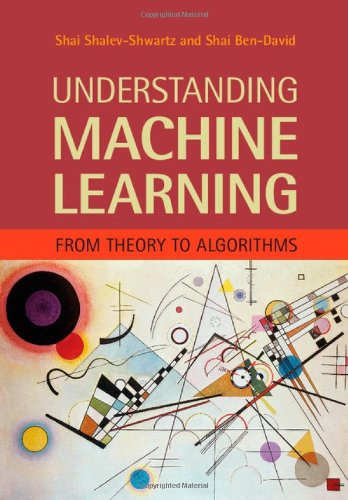
Understanding Machine Learning: From Theory to Algorithms
by Shai Shalev-Shwartz, Shai Ben-David
Publisher: Cambridge University Press 2014
ISBN/ASIN: 1107057132
ISBN-13: 9781107057135
Number of pages: 449
Description:
The aim of this textbook is to introduce machine learning, and the algorithmic paradigms it offers, in a principled way. The book provides a theoretical account of the fundamentals underlying machine learning and the mathematical derivations that transform these principles into practical algorithms.
Download or read it online for free here:
Download link
(2.5MB, PDF)
Similar books
 Reinforcement Learning: An Introduction
Reinforcement Learning: An Introductionby Richard S. Sutton, Andrew G. Barto - The MIT Press
The book provides a clear and simple account of the key ideas and algorithms of reinforcement learning. It covers the history and the most recent developments and applications. The only necessary mathematical background are concepts of probability.
(26898 views)
 Foundations of Machine Learning
Foundations of Machine Learningby M. Mohri, A. Rostamizadeh, A. Talwalkar - The MIT Press
This is a general introduction to machine learning that can serve as a textbook for graduate students and a reference for researchers. It covers fundamental modern topics in machine learning while providing the theoretical basis and conceptual tools.
(6216 views)
 The Elements of Statistical Learning: Data Mining, Inference, and Prediction
The Elements of Statistical Learning: Data Mining, Inference, and Predictionby T. Hastie, R. Tibshirani, J. Friedman - Springer
This book brings together many of the important new ideas in learning, and explains them in a statistical framework. The authors emphasize the methods and their conceptual underpinnings rather than their theoretical properties.
(40092 views)
 Machine Learning
Machine Learningby Abdelhamid Mellouk, Abdennacer Chebira - InTech
Neural machine learning approaches, Hamiltonian neural networks, similarity discriminant analysis, machine learning methods for spoken dialogue simulation and optimization, linear subspace learning for facial expression analysis, and more.
(16231 views)